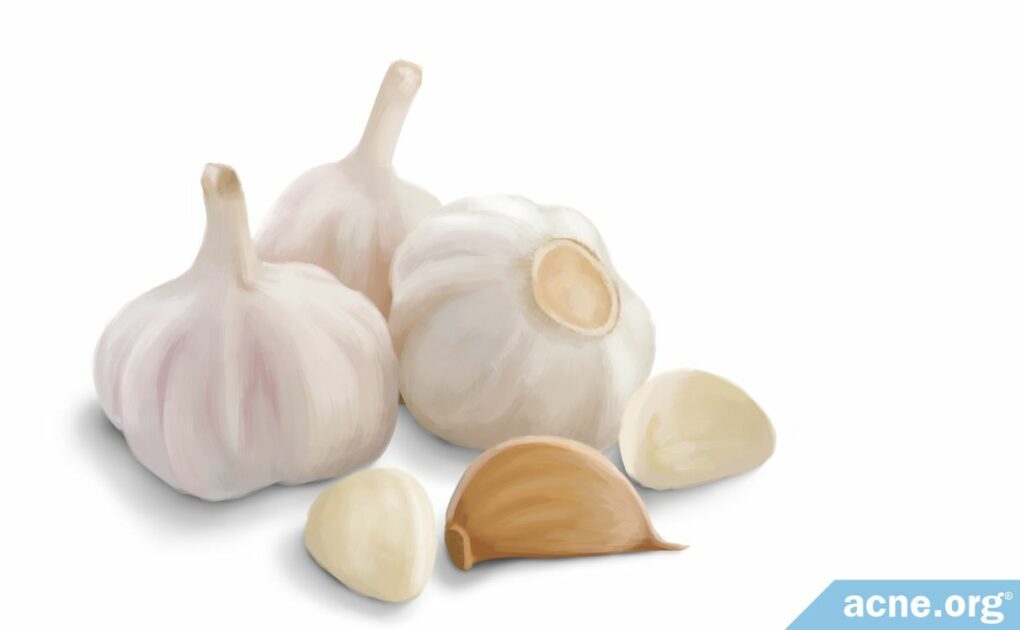Some Weak Evidence Suggests That Applying Garlic Topically Might Improve Acne, but Proceed with Caution

The Essential Info
Topical Garlic:
Garlic is used as a folk remedy for many conditions, and some people are now trying it topically to treat acne.
Garlic possesses:
- Antibacterial activity
- Anti-inflammatory activity
- Antioxidant activity
All of these could hypothetically help reduce acne, but the key word here is “hypothetically.” We only have weak evidence from several laboratory studies to suggest that applying garlic to the skin might improve acne. Since no studies in real patients exist, we still don’t know for sure whether it will help.
If you decide to try topical garlic, keep your expectations realistic. Like the vast majority of home remedies, garlic is unlikely to produce dramatic clearing of your skin.
For the best chances of obtaining a benefit, use freshly cut or crushed raw garlic.
CAUTION – Garlic Can Burn the Skin: In some people, applying garlic to the skin can cause irritation or burns. If you decide to try topical garlic, test it on a small spot on your inner elbow first. If you do not react, try it in a small spot on your jawline, and see if you react there. If you still do not react, it may be safe to proceed on larger areas of your skin. However, even then, stay very careful and only apply it for short periods of time.
___
Oral Garlic:
There is currently no evidence that taking garlic orally has any effect on acne.

The Science
- Does Garlic Work for Acne?
- Treating Acne with Topical Garlic: The Evidence
- How Might Topical Garlic Work Against Acne?
- Garlic Must Be Cut or Crushed To Release Active Compounds
- Side Effects of Topical Garlic
- Treating Acne with Oral Garlic
Garlic, or Allium sativum, has been a popular herbal medicine for centuries. Cultures around the world have used garlic as a folk treatment for conditions as diverse as arthritis, asthma, high blood pressure, and cancer.1,2 Garlic contains many substances thought to be of medicinal value, such as B and C vitamins, flavonoids, minerals, and at least 33 sulfur compounds.3,4
Anecdotal reports also suggest that some people have experienced an improvement in acne after topically applying garlic to the skin.5
Some acne sufferers also ingest garlic orally in the hope that this will reduce breakouts.
Let’s take a look at the scientific evidence behind these practices.
Does Garlic Work for Acne?
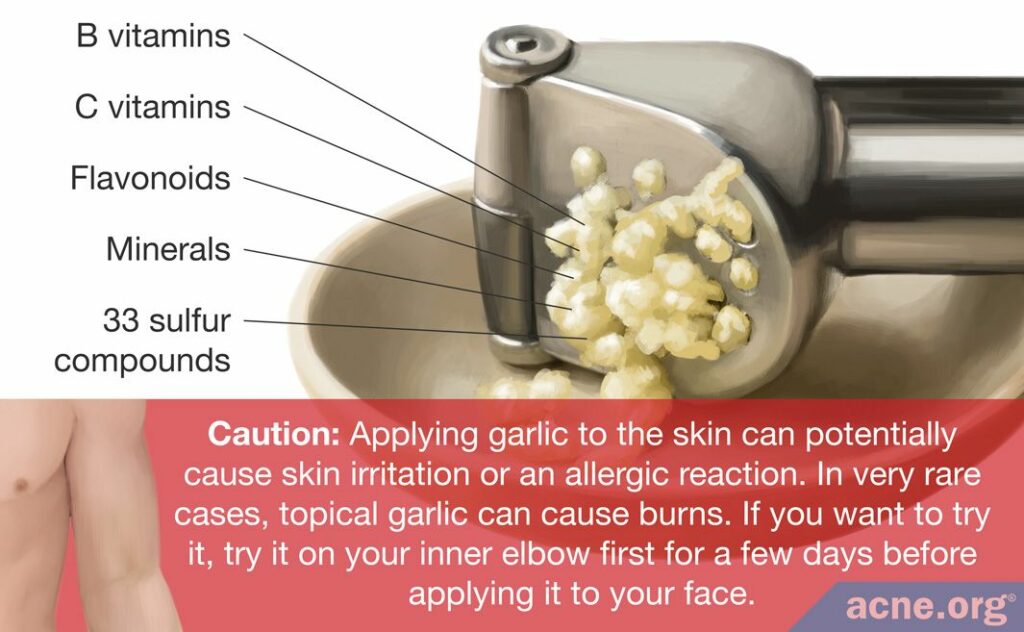
Topical garlic: No researchers to date have conducted a rigorous study testing topical garlic on people with acne. Therefore, it is difficult to say how effective topical garlic might be in real patients and what side effects it might cause. However, we do have some weak evidence from laboratory studies suggesting that applying garlic to the skin might potentially improve acne.
Oral garlic: There is simply no scientific evidence to tell us whether this might improve acne. Scientists have not tested oral garlic treatments on people with acne or in laboratory studies. If you decide to try oral garlic, do not expect a miracle and watch for possible adverse reactions. Too much of a “good thing” is not always a good thing.
Now let’s take a closer look at the available evidence showing that topical garlic might be beneficial for acne sufferers.
Treating Acne with Topical Garlic: The Evidence
Three laboratory studies have looked at how a topical garlic preparation might improve acne and found that it may help reduce the growth of bacteria in a petri dish, but not much else. It’s a start, but doesn’t tell us enough yet to make any conclusions on whether applying topical garlic to the skin would help reduce acne.
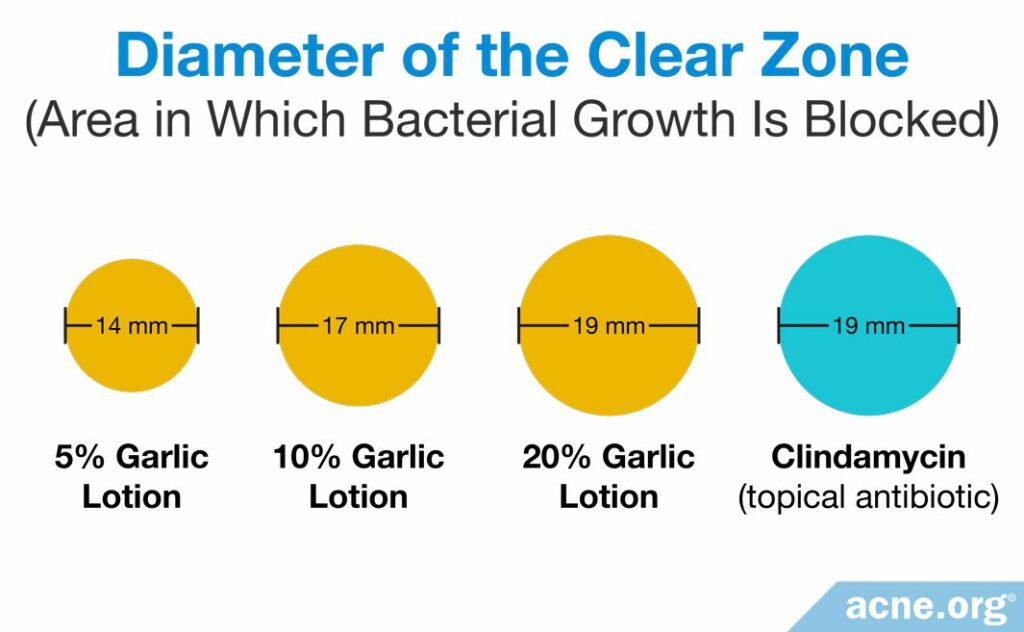
Study 1: The first study demonstrated that a 20% lotion containing garlic can block the growth of acne bacteria in the lab as effectively as clindamycin, an antibiotic sometimes prescribed for acne.6
Expand to read details of study
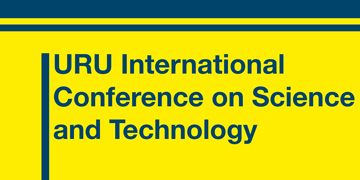
This study was presented at the URU International Conference on Science & Technology in 2016. First, the researchers grew the acne bacteria C. acnes in petri dishes. The scientists then prepared lotions containing different concentrations of garlic juice. Finally, they added each garlic lotion to a petri dish with bacteria and observed for 24 hours. If the lotion successfully blocked the growth of bacteria, the scientists would observe a clear zone around the drop of lotion where no bacteria grew. The larger the clear zone, the stronger the antibacterial properties of the garlic lotion. For comparison, the researchers also tested clindamycin, which is used as a topical antibiotic for treating acne.
The researchers found that each garlic lotion successfully blocked the growth of bacteria. The most concentrated lotion, containing 20% garlic juice, blocked acne bacteria as well as clindamycin. The researchers wrote, “(I)t can be seen that Lotion garlic juice with a concentration of 5%, 10%, 20% [is] effective in inhibiting the growth of bacteria [C.] acnes.”6
It is important to note that, while 20% garlic lotion was effective against acne bacteria in the laboratory, we do not know whether it will work on real skin of people with acne. In addition, since the study did not test the lotion on people, we have no way of knowing whether 20% garlic lotion might cause side effects.
Study 2: A second study confirmed the finding that garlic can block the growth of acne bacteria in the laboratory and also looked at whether topical garlic causes skin irritation in people. The authors concluded that a gel containing raw garlic was not irritating to the skin of 20 volunteers but did not test whether the gel actually helped with acne.7
Expand to read details of study
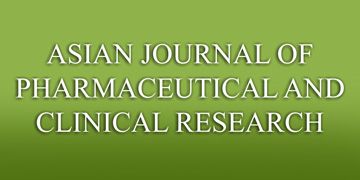
The only published study that tested topical garlic on people appeared in the Asian Journal of Pharmaceutical and Clinical Research in 2017. However, the study looked at whether topical garlic causes skin irritation, not at whether garlic improves acne.
The researchers asked 20 volunteers to apply a gel containing either 3% or 7.5% raw garlic to the back of their hands for 60 minutes to determine skin sensitivity. The study authors reported that the garlic gel was not irritating but did not provide details.7
In addition, the researchers confirmed that garlic gel can block the growth of C. acnes in the laboratory. Like in the previous study, the researchers added a drop of garlic gel to a petri dish with acne bacteria and looked for a clear zone around the gel. They found that gel containing 7.5% garlic juice was most effective against C. acnes, but gel containing 3% garlic juice was also effective and more stable. In addition, they confirmed that garlic gel possesses antibacterial properties of similar strength to clindamycin.7
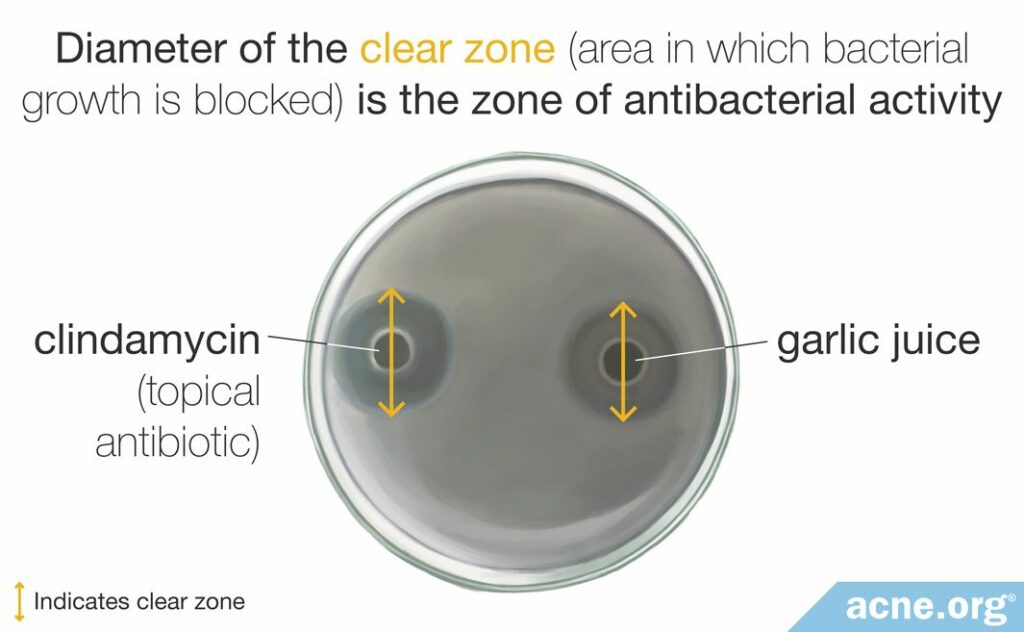
Again, it is important to keep in mind that this study did not evaluate whether topical garlic is effective against acne bacteria in real patients. The study simply confirmed that garlic can block acne bacteria in the lab and showed that a garlic gel did not irritate the skin of a small number of volunteers.
Study 3: A third study reported that a skin product containing a garlic component and glycolic acid reduced the amount of acne lesions as well as the amount of skin oil in people with acne.8 However, the results of this study may not be reliable for multiple reasons:
- The authors of the study did not present details of how they performed the study, making it difficult to evaluate their claims
- The authors of the study did not include a comparison to a control group (a group of patients who applied a similar skin product lacking the active ingredient–in this case, garlic). Without a control group, it is difficult to be sure that garlic, and not some other ingredient in the skin product, produced the improvement in acne and reduction in skin oil.
- The skin product also contained glycolic acid, which may be beneficial in treating acne. Therefore, any positive effect on acne may be due to the glycolic acid and not to garlic.
- The study formed part of a patent application for a skin product intended to treat acne. The same company which developed the product also tested it, creating a risk of bias.
Expand to read details of study
The results of this study were reported in 2015 in a patent application for a skin product made by Grupo Medifarma. The skin product consisted of DDMO (diallyl disulphide modified oxide, a compound found in garlic) and glycolic acid, which is an exfoliating agent that may aid in treating acne. First, the authors of the patent application conducted a laboratory test, in which they looked at how well the skin product blocked the growth of acne bacteria. They reported that the invention blocked nearly 100% of C. acnes growth.8
Then, the authors tested the skin product on 20 patients for 28 days. According to the patent application, the skin product reduced inflammatory lesions by 35% and also significantly reduced skin oil. The researchers measured skin oil production by testing how many paper towels a patient would need per day to remove skin oil from the forehead. They reported that a patient who needed five paper towels a day to remove skin oil at the beginning of treatment would only need one paper towel at the end of the 28 days of treatment.8
Summing up the findings of these three studies, we can be reasonably certain that garlic can block the growth of acne bacteria in the laboratory. However, at this time, we have no reliable evidence that garlic applied to the skin can penetrate into the skin and block bacterial growth or improve acne in any other way.
So let’s assume for the sake of argument that applying garlic to the skin does work against acne. How might it work? Read on…
How Might Topical Garlic Work Against Acne?
Even though we have no reliable evidence that topical garlic helps with acne, there is still a possibility it might prove effective. To fight acne, garlic would need to possess one or more of the following medicinal properties:
- Antibacterial activity: An ability to kill bacteria like C. acnes, a type of bacteria that can make acne worse.
- Anti-inflammatory activity: An ability to reduce inflammation (redness, itching, swelling, and soreness), which underlies acne.
- Antioxidant activity: An ability to remove free radicals, which are naturally occurring toxins that can build up in the body and contribute to acne.
- Wound-healing properties: An ability to aid the healing of breaks in the skin, such as acne lesions.
Indeed, there is some scientific evidence that garlic possesses several of these medicinal properties, as outlined in the graphic below. The items in green show some promise that garlic might help with antibacterial, anti-inflammatory, antioxidant, and wound-healing activity, but this evidence is only the first baby step along the way to answering the question of whether garlic would in fact help with acne.9-11
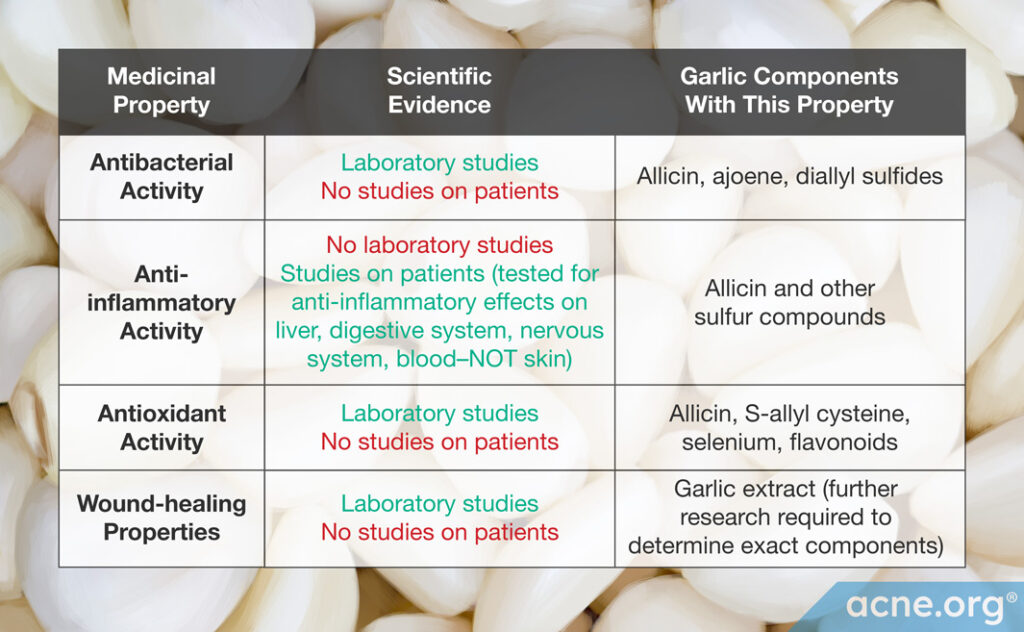
Garlic Must Be Cut or Crushed To Release Active Compounds
As we have seen, garlic possesses medicinal properties that might potentially benefit people with acne.
However, we need to cut or crush garlic to activate its beneficial properties.
Whole garlic cloves are of no medicinal value, and it would be futile to place whole garlic cloves on the skin. Whole garlic contains a substance called alliin, which is an odorless compound that possesses no medicinal qualities.
When we damage a garlic clove by cutting or crushing it, this converts alliin into a new substance called allicin. Unlike alliin, allicin exhibits antibacterial, anti-inflammatory, and antioxidant activity.3-5 Allicin also emits the characteristic garlic odor, which is why garlic only begins to smell strong when we cut or crush it.
Another consideration is that once cut or crushed, garlic must be used immediately because allicin quickly breaks down and becomes inert.3,4
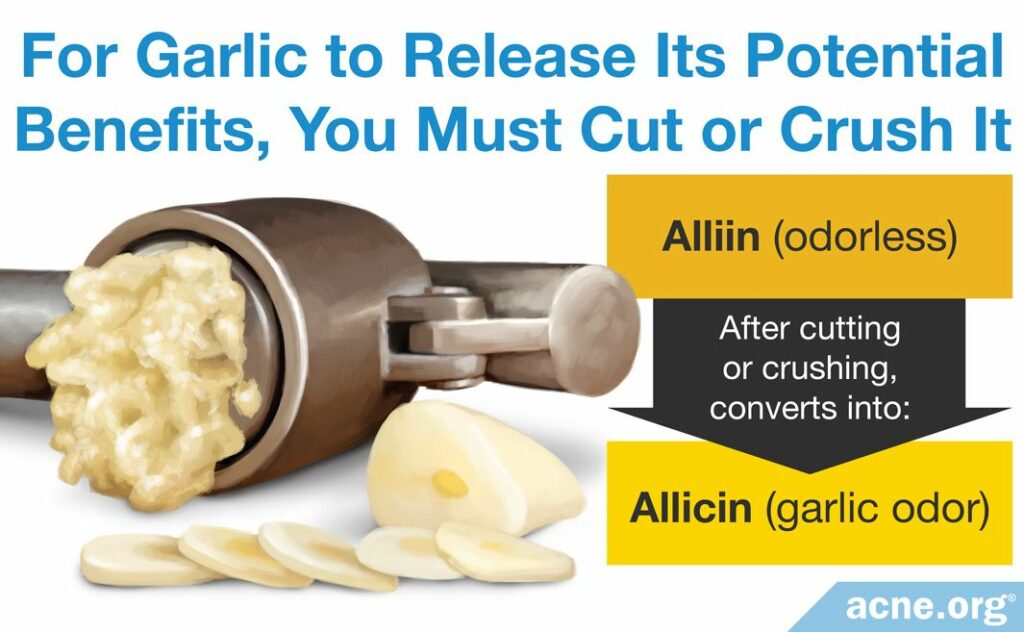
Over-the-counter garlic preparations like dehydrated (dried) garlic, concentrated garlic oil, garlic juice, and garlic extract are generally not as beneficial as freshly cut or crushed raw garlic. For example, garlic powders contain only 10 mg/g alliin at most, whereas crushed raw garlic contains about 37 mg/g – in other words, raw garlic is about four times more powerful. If you are going to use an over-the-counter garlic preparation, opt for garlic extract, which possesses more medicinal properties than dried garlic, garlic oil, and garlic juice. However, freshly cut or crushed raw garlic is still the best option for obtaining maximum benefit.3,4,12
Side Effects of Topical Garlic
CAUTION: Applying garlic to the skin can potentially cause skin irritation and an allergic reaction, particularly when it comes to sensitive skin. In rare cases, topical garlic can cause burns. If you do decide to use topical garlic, do a patch test first, and proceed with caution.
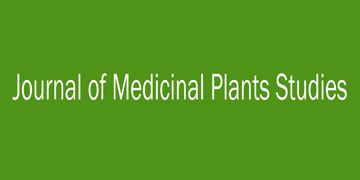
According to a 2016 article in the Journal of Medicinal Plant Studies, “Although garlic generally poses little in terms of safety issues, there are isolated cases of topical garlic burns.”13
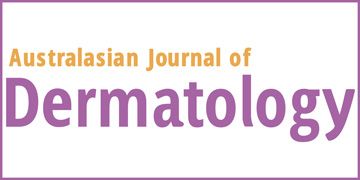
One such case was reported in 2018 in the Australasian Journal of Dermatology. A 22-year-old woman applied four cloves of crushed garlic as a face mask to treat her acne. After three hours of wearing the mask, she experienced severe burning with blisters. Doctors treated her injured skin and subsequently recommended a topical acne treatment consisting of benzoyl peroxide, a topical antibiotic, and a moisturizing cream.14
This case highlights the importance of using topical garlic cautiously, by first testing it on the skin of your inner elbow. If, after testing garlic on your skin, you do decide to try a garlic mask, make sure to only apply it for short periods of time.
Treating Acne with Oral Garlic
There is currently no evidence to back up the idea that eating garlic or taking garlic supplements can help with acne.
Research has shown that when we eat garlic, the stomach, intestine, and liver absorb a large amount of alliin (the odorless precursor to allicin).3 However, we do not know whether this translates into sufficient amounts of allicin, the main medicinal component of garlic, ending up in the skin where it can help treat acne.
When it comes to how ingested garlic might fight acne, we also have very little to go on. Research suggests that oral garlic increases the level of certain antioxidants in the blood.3,4,15 Whether this would translate into appreciable anti-acne effects remains to be seen.
Taking garlic orally can come with side effects, which are caused by ingesting allicin. The most common of these are bad breath, nausea, and vomiting. Diarrhea, upset stomach, and a decreased level of protein and calcium in the blood are also possible.12
References
- Pazyar, N. & Feily, A. Garlic in dermatology. Dermatol Reports 3, 5 – 7 (2011). https://www.ncbi.nlm.nih.gov/pmc/articles/PMC4211483/
- Ho Gya, C. The health benefits of garlic. Total Health 19, 52 – 54 (2007). http://www.totalhealthshow.com/showInfo/index.cfm
- Santhosha, S. G., Jamuna, P. & Prabhavathi, S. N. Bioactive components of garlic and their physiological role in health maintenance: A review. Food Biosci 3, 59 – 74 (2013). https://pubag.nal.usda.gov/catalog/5444942
- Martins, N., Petropoulos, S. & Ferreira, I. C. Chemical composition and bioactive compounds of garlic (Allium sativum L.) as affected by pre- and post-harvest conditions: A review. Food Chem 211, 41 – 50 (2016). https://www.ncbi.nlm.nih.gov/pubmed/27283605
- Papu, S., Jaivir, S., Sweta, S. & Singh, B. R. Sativum L in Human Life : An Overview. Greener J Agric Sci 4, 265 – 280 (2014). https://pdfs.semanticscholar.org/4ca8/59ec58ed7b6784181410dd9efd6454a34076.pdf
- Muthahharuun, M. Standardization of a Garlic (Allium sativum L.) Extract for Lotion Particularly against a Bacteria Propionibacterium acnes. in URU International Conference on Science & Technology. 87 – 91 (2016). https://scitech.kpru.ac.th/publishingresearch/uploads/shw_2017080195704.pdf
- Saptarini, N. Y. & Herawati, I. E. Development and evaluation of anti-acne gel containing garlic (Allium sativum) against Propionibacterium acnes. Asian J Pharm Clin Res 10, 18 – 20 (2017). https://innovareacademics.in/journals/index.php/ajpcr/article/view/19271
- Evans, T. C. et al. ( 12 ) Patent Application Publication ( 10 ) Pub . No .: US 2006 / 0222585. 002, 354 (2015). https://authors.library.caltech.edu/82691/1/US20140328862A1.pdf
- Farooq, M. A., Ali, S., Sulayman, R., Hassan, A., Tahir, H. M., Shahzad, H., Fiaz, U., Mughal, T. A., Liaqat, I., Mumtaz, S., Nauroze, T. & Mumtaz, S. Therapeutic applications of garlic and turmeric for the diabetic wound healing in mice. J Burn Care Res 44, 800-809 (2023). https://pubmed.ncbi.nlm.nih.gov/36331804/
- Chekki, R. Z., Snoussi, A., Hamrouni, I. & Bouzouita, N. Chemical composition, antibacterial and antioxidant activities of Tunisian garlic (Allium sativum) essential oil and ethanol extract. Mediterr J Chem 3, 947 – 956 (2014). http://www.medjchem.com/index.php/medjchem/article/view/37
- Hameed, I. H., Hussein, H. J. & Hadi, M. Y. A Review: Anti-microbial, Anti-inflammatory effect and cardiovascular effects of garlic: Allium sativum. Artic Res J Pharm Technol 10, 4069 – 4078 (2017). https://www.researchgate.net/publication/322909963_A_Review_Anti-microbial_Anti-inflammatory_effect_and_Cardiovascular_effects_of_Garlic_Allium_sativum
- Rahman, M. S. Allicin and other functional active components in garlic: Health benefits and bioavailability. Int J Food Prop 10, 245 – 268 (2007). https://www.tandfonline.com/doi/full/10.1080/10942910601113327
- Khorshed Alam, M., Obydul Hoq, M., Shahab Uddin, M. & Md Khorshed Alam, C. Medicinal plant Allium sativum: A review. J Med Plants Stud JMPS 72, 72 – 79 (2016). http://www.plantsjournal.com/archives/?year=2016&vol=4&issue=6&part=B&ArticleId=463
- Hisham, A., Mohamed Sukur, S. & Basiron, N. A case of facial burn due to the misuse of garlic face mask for acne. Australas J Dermatol 59, 336-337 (2018). https://www.ncbi.nlm.nih.gov/pubmed/29377074
- Arreola, R. et al. Immunomodulation and anti-inflammatory effects of garlic compounds. 2015, 401630 (2015). https://www.ncbi.nlm.nih.gov/pubmed/25961060
 Acne.org Products
Acne.org Products